Huawei Mate 20, 20 Pro, and 20 X hands-on review

Huawei Mate 20 X hands-on
Huawei had not one but two surprises after the Mate 20 and Mate 20 Pro announcements. The first one was the Mate 20 X 7.2" phablet, which is mainly targeted at gamers, but has a lot more going for it. It's part Mate 20 (1080p resolution, rear-mounted fingerprint scanner, 22.5W charging), part Mate 20 Pro (OLED panel, the more advanced camera setup, stereo speakers) and part its own thing (the huge diagonal, an equally impressive battery and M Pen stylus support).

The Mate 20 X has a large 7.2" OLED screen of 1080p resolution and a very small waterdrop notch. It looks a lot like the regular Mate 20, but you can tell right away the screen is of the OLED kind. The pixel density drops down to 346ppi but that's still plenty sharp.
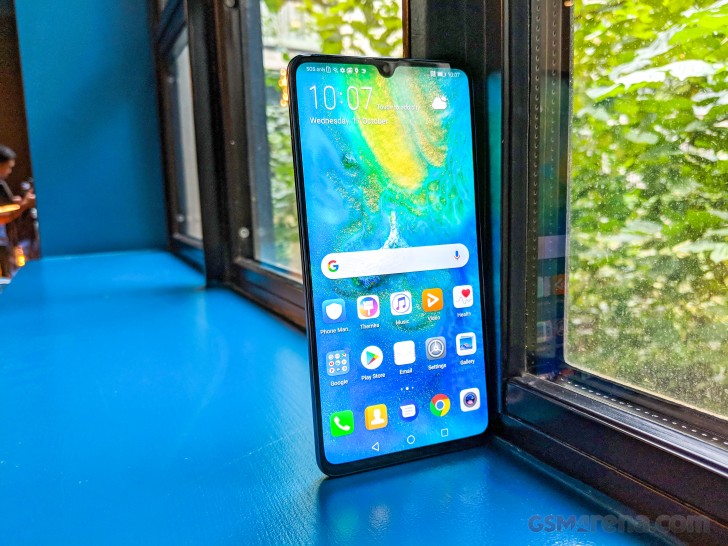
The Mate 20 X has the same dual-glass design as the other two, but its dust and water protection is the lesser IP53. And even though it has a glass back, there is no wireless charging available.

The Mate 20 X has lifts the tri-camera from the Pro model - 40MP regular, 20MP wide, and 8MP OIS telephoto. The square setup is here to stay, of course, as it's the signature shape for this Mate generation.
The smaller notch has the 24MP selfie shooter at the front - that along with the Kirin 980 chipset is shared by all Mate 20's that debuted today.
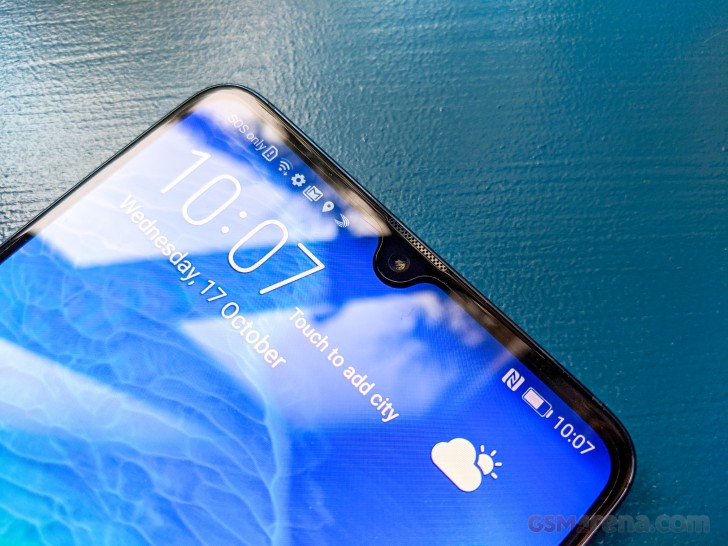
The Mate 20 X has audio jack on its top, and there are two grilles for the new Dolby Atmos-powered speakers - at the top and the bottom. Yes, the bottom speaker isn't embedded in the USB port here and we sure like it better this way.
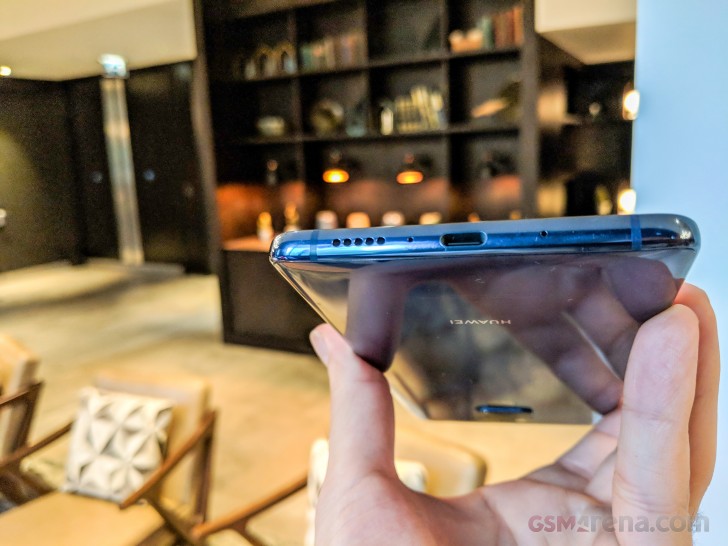
Then the hybrid SIM slot with the new NM memory card is available on the Mate 20 X, too. Huawei is dead serious with the new standard and will try to push it aggressively for sure.
The Mate 20 X runs on the Kirin 980 chip, comes with EMUI 9 and GPU Turbo 2.0. The phone features Huawei Supercool - the company's name for a vapor chamber cooling with a graphene film heat spreader. It sure sounds interesting, but before we do some proper testing we can't be sure whether it's actually useful or just a marketing gimmick.

So, as we said the phone is gaming-oriented - it has the chipset and the cooling tech, as well as the high-end speakers. But there is more - the Mate 20 X is powered by a beefy 5,000 mAh battery with support for Huawei's SuperCharge at 22.5W. The faster 40W would have been especially useful here, considering the large battery, but we mustn't forget that the 20 X is cheaper than both the Pro and the Porsche Design Mate 20 RS.
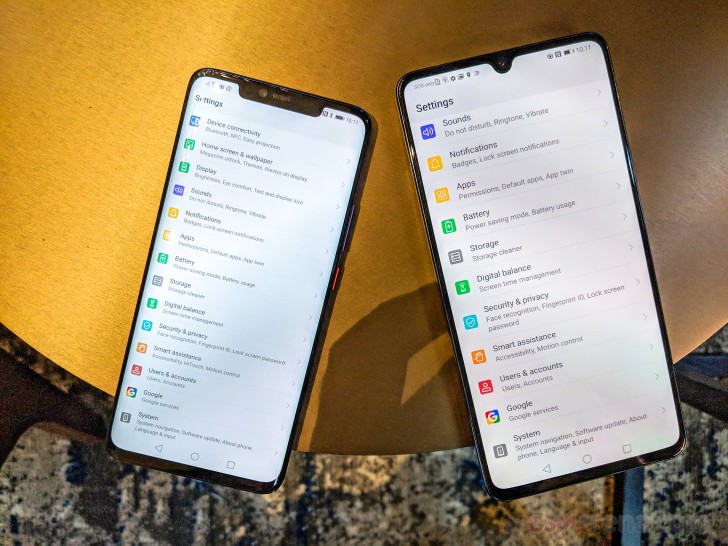 Mate 20 Pro and Mate 20 X
Mate 20 Pro and Mate 20 X
There is one more thing about the Mate 20 X, which we couldn't test. The Mate 20 X has a pressure-sensitive screen, which can sense up to 4,096 levels of pressure. The so-called M-Pen is sold separately, unfortunately, and there's no slot on the phone for it. But if you do opt to get it, Huawei has modified a bunch of its system apps to add support for it.
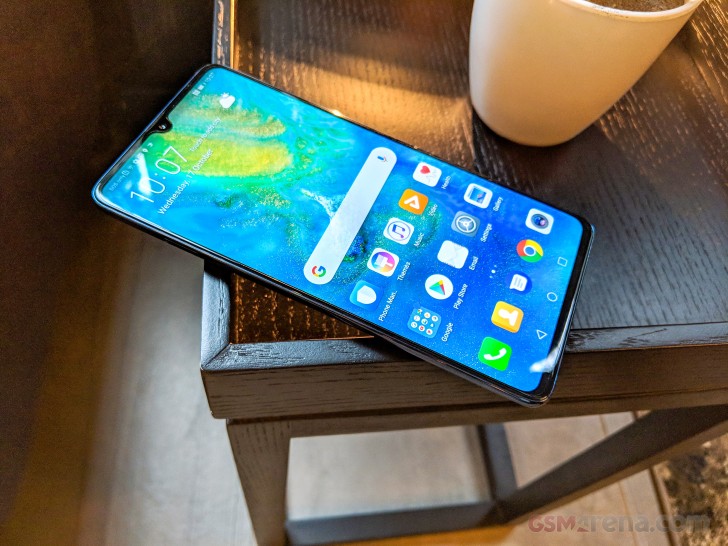
The phone is big, yes, and will barely fit in pockets. And it's unlikely to even be released in most Western markets, but we can still see many people choosing this one over the other Mates. It's priced at €899 so you are saving some compared to the Pro, yet it has its camera, the screen is OLED, and that battery backup is impressive.
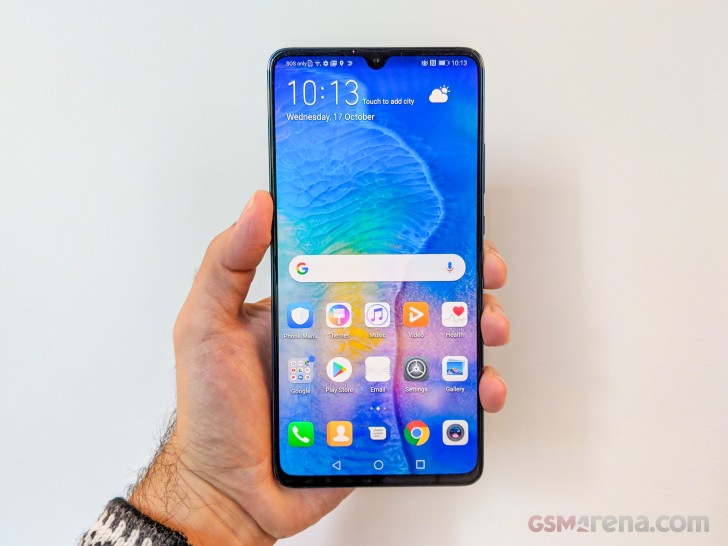
The phone didn't feel that heavy in hand and is rather thin, so it's handling is reasonable considering the humongous screen.
Reader comments
- Anonymous
- 17 Jan 2021
- X}Z
It's not fair or proper to criticize Huawei for going for proprietary memory cards. Because SD cards which other smartphone makers use are also proprietary, patented and copyrighted. Manufacturers need to get a license to produce SD cards. And H...
- Anonymous
- 17 Jan 2021
- X}Z
I disagree. I expect Huawei will keep using NM card so it is not planned obsolescence. and There is no reason for memory cards to be the same size as SD card when generally used nano SIM cards are not. It makes more sense to make memory cards to matc...
- Anonymous
- 17 Jan 2021
- X}Z
What standard format are you talking about? SD card adopted by other smarphone makers is not an open standard format. SD card is a proprietary format as well like Huawei's NM format.